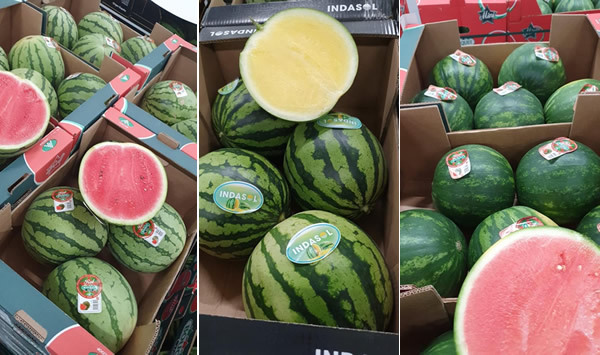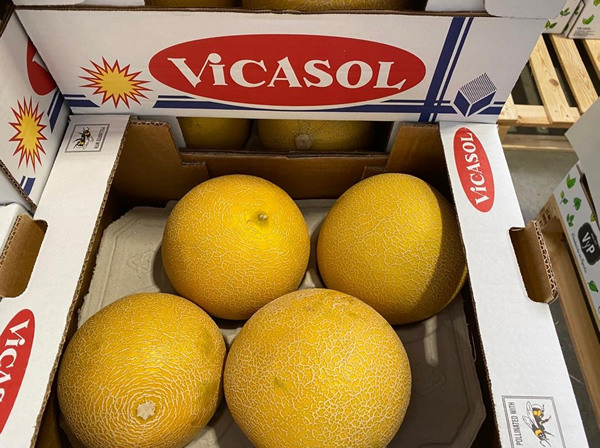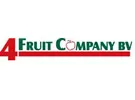While watermelon sales lagged last week, those saw a significant uptick this week as temperatures rose. "German supermarkets contributed heavily to the demand earlier this week. However, sales have momentarily stalled as May 1st is a public holiday in many countries," says Pieter de Ruiter of the Dutch company 4 Fruit Company.
Watermelon prices are hovering around €1 to €1.10. "That's excellent and, fortunately, sales are considerably higher than last week. The market had a significant overseas supply. For instance, seedless watermelons were selling at €0.60 and Quatzali's at €0.50. That genuinely disrupted the market."
The acreage dedicated to Spanish watermelons remains similar to last year. "Current forecasts suggest there might be slightly fewer kilos due to the drought. But we'll only know if that's true in a few months. Nonetheless, this is prime Spanish watermelon season, and greenhouse watermelon cultivation in Almeria is in full swing. From July onwards, competition increases significantly with supplies coming in from places like Italy, Turkey, Hungary, and the Balkans," explains Pieter.

"Watermelons are easy to sell at this time of the year. For the rest of the melon assortment, there's growing enthusiasm among Spanish growers and cooperatives, especially for yellow and Piel de Sapo melons. Those enjoy broad European demand. Galia melons are mainly sold in the Netherlands and Belgium, while the Cantaloupe market is primarily focused in France and the United Kingdom. Bad weather can make these types much harder to sell."

According to the importer, other stone fruits are still in their early stages. "The apricots are already tasty, but I find the peaches and nectarines still slightly young, small, and hard. They need more time to develop. Vegetables-wise, the supply from Spain is dwindling. Still, prices for cauliflower (€20) and iceberg lettuce (€12-€13) are high. The Dutch supply must still come, and the availability of Spanish products is limited. Only the broccoli market is noticeably cheaper in comparison," Pieter concludes.
 For more information:
For more information:
Pieter de Ruiter
4 Fruit Company
30 Handelsweg
2988 DB, Ridderkerk, The Netherlands
Tel.: +31 (0) 180 641 902
Email: [email protected]
www.4fruitcompany.nl
